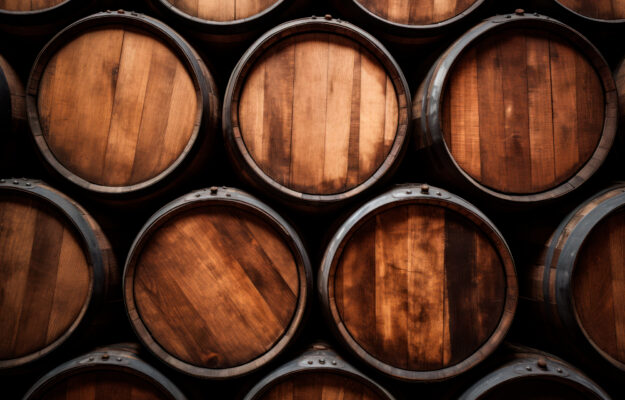This year’s grape harvest is now coming to an end in many territories and it will be the lowest quantity in the last six years. As of September 30, 2023, instead, Italian wineries are holding 42.8 million hectoliters of wine in stock, which is 9.1% more than September 30, 2022, and 6.1% less than July 31, 2023. Plus, there are 6.5 million hectoliters of must (-43.6% compared to September 2022) and 2.2 million hectoliters of new wine still in fermentation (-57.6% compared to September 2022). This is the summary of “Cantina Italia”, the latest report drawn up by ICQRF (Central Quality and Fraud Repression Inspectorate of the Ministry of Agriculture and Food Sovereignty), based on data contained in the electronic wine registers, indicating that 54.9 % of the wine is held in the Northern Regions, 54.2% of the wine held is PDO, 27.1% PGI, and varietal wines make up just 1.4% of the total. As usual, stocks of Geographical Indication wines are concentrated: 20 denominations out of 526, contribute 58.2% of total stocks.
The Veneto Region alone holds 23.5% of the National wine, mainly because of the stocks of wine in the provinces of Treviso (9.4%) and Verona (8.7%). Followed by Puglia (11.6%), Tuscany (11.5%), Emilia Romagna (9.6%), Piedmont (9.1%), Sicily (6.7%), Abruzzo (5.4%), Lombardy (4.8%), Trentino Alto Adige (4.3%) and Friuli Venezia Giulia (3.6%). Of the 54.2% of PDO wines in Italian wineries, 55.1% are red wines that also represent 65.2% of PGIs.
As far as denomination wines are concerned, (PDO and PGI), the largest stocks are Prosecco, counting 10.4% of the total (3.6 million hectoliters), followed by Puglia PGI (5.9%, 2 million hectoliters) and Salento PGI (3.9%, 1.35 million hectolitres). In fourth place Sicily PDO (3.9%, 1.35 million hectoliters), ahead of Tuscany PGI (3.9%, 1.34 million hectoliters), Montepulciano d’Abruzzo (3.8%, 1, 3 million hectoliters), Chianti (3%, 1 million hectoliters), Terre Siciliane PGI (2.9%, 1 million hectoliters), Veneto PGI (2.7%, 925,000 hectoliters), PDO Delle Venezie (2.4%, 830.000 hectoliters), Chianti Classico (2.1%, 730.000 hectoliters), Rubicone (1.7%, 583.000 hectoliters), Valpolicella Ripasso (1.6%, 561.000 hectoliters), Emilia Igp (1.5%, 534.000 hectoliters), Primitivo di Manduria (1.5%, 526.000 hectoliters), Franciacorta (1.5%, 522.000 hectoliters), Conegliano Valdobbiadene Prosecco (1.5%, 518.000 hectoliters), Province of Verona PGI (1.4% , 497.000 hectoliters), Barolo (1.4%, 495.000 hectoliters) and Amarone della Valpolicella (1.2%, 420.000 hectoliters).
Most of the 6.5 million hectoliters of Italian musts are held in the Northern (51.8%) and Southern (30.0%) Regions of Italy. Two regions hold 46.6% of musts, Puglia (26.7) and Emilia-Romagna (19.9%). The new wines still in fermentation total 2.2 million hectoliters, 72.0% in stock in the North, 12.1% in the South, 10.3% on the Islands and the remaining 5.6% in the Center.
Copyright © 2000/2025
Contatti: info@winenews.it
Seguici anche su Twitter: @WineNewsIt
Seguici anche su Facebook: @winenewsit
Questo articolo è tratto dall'archivio di WineNews - Tutti i diritti riservati - Copyright © 2000/2025









































































































































































































